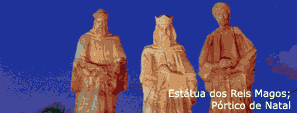|
Marcio Lobo Netto, Marcos Antonio Cavalhieri, Luciene
Cristina Rinaldi Rodrigues
Cognitive Sciences Research Group, Polytechnic School
of the University of São Paulo
05508-900, Av. Prof. Luciano Gualberto, trav. 3, 158
- São Paulo, Brazil
{lobonett,mac,luciene}@lsi.usp.br
The main goal of this tutorial is to introduce general
artificial life concepts, and to present some deeper
details on those aspects that may be of interest for
the computer graphics community, particularly to those
people involved with the design of virtual characters
or with computer animation.
The tutorial intends to motivate new researches in this
area. It provides an overview of this field, starting
with analysis of life concepts, aiming to provide the
support required to propose mathematical models that
can reproduce life aspects appropriately in computer
simulations. Then, it presents different approaches
used to study different aspects of life, from very simple
unicellular beings, to more complex multi-cellular ones,
containing a large variety of functions and specific
organs. Virtual creatures can be developed and used
in a large diversity of scenarios, and for each of them
different simulation approaches may apply. Therefore
this tutorial uses some case studies to describe how
these approaches can be effectively used on these different
scenarios. For instance, we can be interested, as scientists,
on the observation of the evolution of virtual creatures
representing beings from some species, studying their
evolution, adaptation capacity, and so for. Or we may
be interested, as graphic animators, on the production
of real looking and behaving virtual creatures that
play their act based on some movie script. The tutorial
presents diverse perspectives to analyze and to design
virtual beings, describing their internal architectures
and external social relationships. The final results
emerge from the dynamics associated to these models,
and are strongly dependent from adaptive concepts. We
introduce some models to represent the subsystems contained
in these simulations, showing how they can evolve and
adapt, and the emergence of nice natural features, recognizable
as similar to those found in live-systems.
Behavioral and cognitive animation can provide an efficient
framework and tools to develop virtual creatures. Therefore
we will present some techniques and concepts that can
be used to implement these features,providing the virtual
actors with the required capacity to decide how to play
their role, or how to react in different circumstances.
We are interested to show how these concepts and techniques
can be applied in order to provide means to support
auto adaptation, based on strategies as genetic evolution
and learning. We also discuss how mental models can
be built to describe the personal vision of the world,
and how to use basic language structures to communicate
knowledge and as basis for reasoning and decision taking.
|



